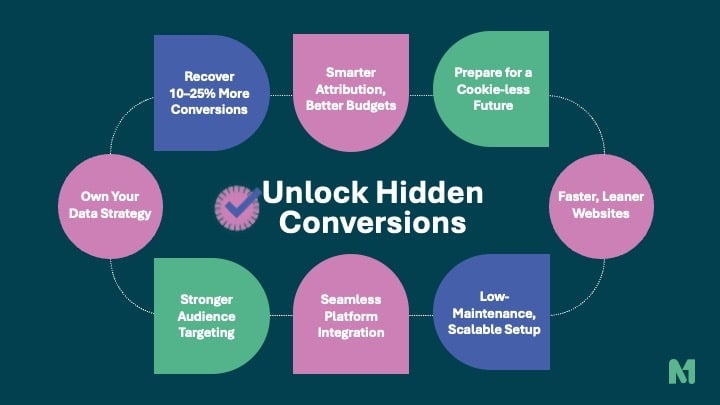Merging AI and HI to Reach Your Target Audience
In travel and tourism, timing is everything. Getting the right message in front of the right person at the right time—it’s not just a goal, it’s the...
2 min read
Stuart Chamberlain : Nov 18, 2025 7:00:01 AM
 Data is critical for marketing leaders to understand how campaign strategies perform and demonstrate success to stakeholders. However, we’ve spent years optimizing campaigns around data that’s quietly slipping through our fingers. Stricter browser privacy rules, and the widespread use of ad blockers, mean the traditional website tracking technology you’re used to (like Google Analytics) has become increasingly unreliable and outdated.
Data is critical for marketing leaders to understand how campaign strategies perform and demonstrate success to stakeholders. However, we’ve spent years optimizing campaigns around data that’s quietly slipping through our fingers. Stricter browser privacy rules, and the widespread use of ad blockers, mean the traditional website tracking technology you’re used to (like Google Analytics) has become increasingly unreliable and outdated.
That’s where server-side tracking comes in. It’s a modern, future-proof solution that addresses the data gaps caused by ad blockers and stricter privacy rules, strengthening data accuracy and restoring visibility into user behavior.
Server-side tracking is a method of collecting and processing user data on your own server. Traditional “client-side” tracking technology, like Google Analytics, uses cookie-based tracking and records data directly in the user’s browser. Modern browsers (like Safari and Firefox) restrict cookies, making cookie-based tracking less reliable. Server-side tracking doesn’t depend on cookies to the same extent, allowing us to close those data gaps and see a more accurate picture of campaign performance while collecting that data in compliance with privacy standards.
Server-side tracking isn't just a technical update; it's essential for modern marketing. It uncovers more detailed insights into user behavior, delivers a fuller picture of the true impact of your marketing campaigns, and enhances attribution. Incorporating server-side tracking into your analytics strategy is a smart investment for maintaining the quality of your marketing data and delivering a more complete picture of your impact to stakeholders.

The future is clear: server-side tracking is essential to making sure you are getting a fuller, more accurate picture of your data. At MediaOne, we are actively deploying server-side tracking across all our clients, helping to address the potential data loss from traditional tracking methods and deliver insights that give campaigns a strategic advantage.
Marketing strategies are constantly in flux, but embracing major breakthroughs like server-side tracking technology helps you get a better picture of your performance and adapt to change in the future.

In travel and tourism, timing is everything. Getting the right message in front of the right person at the right time—it’s not just a goal, it’s the...

For most DMOs and CVBs, July 1 marks more than just a new fiscal year. It’s also the green light for new campaigns, new goals, and a fresh batch of...
AI is rapidly transforming marketing, but it’s not a silver bullet - and it’s not without risk. As brands grapple with the ways AI adoption is...